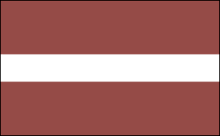NOWE WYDAWNICTWA! TAJEMNICZE MIASTO - TOM 1 ORAZ PRZEWODNIK PORÓWNAWCZY CZ.
2
-
[image:
http://www.cmsklep.eu/michal-szymanski-warszawa-tajemnicze-miasto-stara-warszawa-p-137.html]
[image:
http://www.cmsklep.eu/warszawa-pozostale-d...
niedziela, 29 lipca 2012
LJUBLJANA - STARE MIASTO \ OLD TOWN
Wyświetl większą mapę
Stolica Słowenii nie jest duża - liczy ok. 250.000 mieszkańców. Istniała już w I w. pod nazwą Emona - była to rzymska osada wojskowa. W 1144 miasto nazywało się Luwigana, a w 1220 otrzymała prawa miejskie. W XIII w. miasto zajęli Habsburgowie i zmienili nazwę na Laibach. Miasto było niejako ostoją języka i kultury słoweńskiej, po znakomita większość mieszkańców to byli właśnie Słoweńcy. Pod koniec XVIII w. miasto zajęły wojska Napoleona, ale po kilkunastu latach wróciło w granice Austrii i rozwijało się intensywnie. Po I WŚ utworzono tu Królestwo Serbów, Chorwatów i Słoweńców, które w 1929 stało się Jugosławią. W czasie II wojny Ljubljanę okupowali naziści. W 1991, kiedy Słowenia uzyskała niepodległość, miasto stało się stolicą młodego państwa.
The capital of Slovenia is not big - there are about 250 000 inhabitants. It existed in the I c. under the name Emona - it was a Roman military settlement. In 1144 the town was called Luwigana, and in 1220 it received city rights. In the XIII century, the town was taken by the Habsburgs and they changed its name to Laibach. The city was like a centre of Slovenian language and culture, the vast majority of the inhabitants were just Slovenes. At the end of the XVIII c., Napoleon's troops invaded the city, but after several years it returned to the borders of Austria and began to develop intensively. After the First World War Kingdom of Serbs, Croats and Slovenes established here, which became Yugoslavia in 1929. During World War II Nazi occupated Ljubljana. In 1991, when Slovenia gained independence, the city became the capital of the young state.
Gimnazjum i szkoła techniczna z 1871
Realschule and technical school from 1871
Kolorowy dom
Coloured house
Prešernov trg
Pomnik poety France Prešerena z 1905
France Prešeren (a poet) monument from 1905
Kościół franciszkański Zwiastowania NMP z 1660
Frantiskan church of Annunciation from 1660
Widok na Potrójny Most
A view on Triple Bridge
Kramy
Trade places
Katedra św. Mikołaja z XVIII w.
St. Nicolas cathedral from the XVIII c.
Uniwersytet
University
Zmajski most
Zmajski Bridge
Na Zmajskim moście stoją smoki - symbole miasta
There are some dragons on Zmajski Bridge - they are the symbols of the city
Zamek, pochodzący prawdopodobnie z 1112. Do końca XVIII w. stanowił rezydencję Habsburgów. Później mieścił się tu arsenał i szpital wojskowy. Potem zniszczony, stał się więzieniem, aż do 1906, kiedy miasto kupiło go na potrzeby muzeum. Po renowacji, jest ośrodkiem kulturalnym do dziś.
Castle, which comes from 1112. Till the end of the XVIII c. it was Habsburgs' residence. After that it was an arsenal and military hospital. Then it was partially destroyed and used as a prison. In 1906 the municipality bought it for the museum purposes and, after the renovation, it's a cultural centre.
Widok z wieży
A view from the tower
Kaplica zamkowa
Castle chapel
Schody na wieżę
Stairs to the top of the tower
Subskrybuj:
Komentarze do posta (Atom)

.svg.png)










































































1 komentarz:
I do not drop a comment, however after looking at through a bunch of remarks on "LJUBLJANA - STARE MIASTO \ OLD TOWN".
I actually do have 2 questions for you if you do not mind.
Could it be simply me or do a few of the remarks come across as if they are written by brain dead visitors?
:-P And, if you are posting on other sites, I'd like to keep up with anything new you have to post. Could you post a list of the complete urls of your social networking sites like your twitter feed, Facebook page or linkedin profile?
Check out my blog post: anti cellulite treatment
Prześlij komentarz